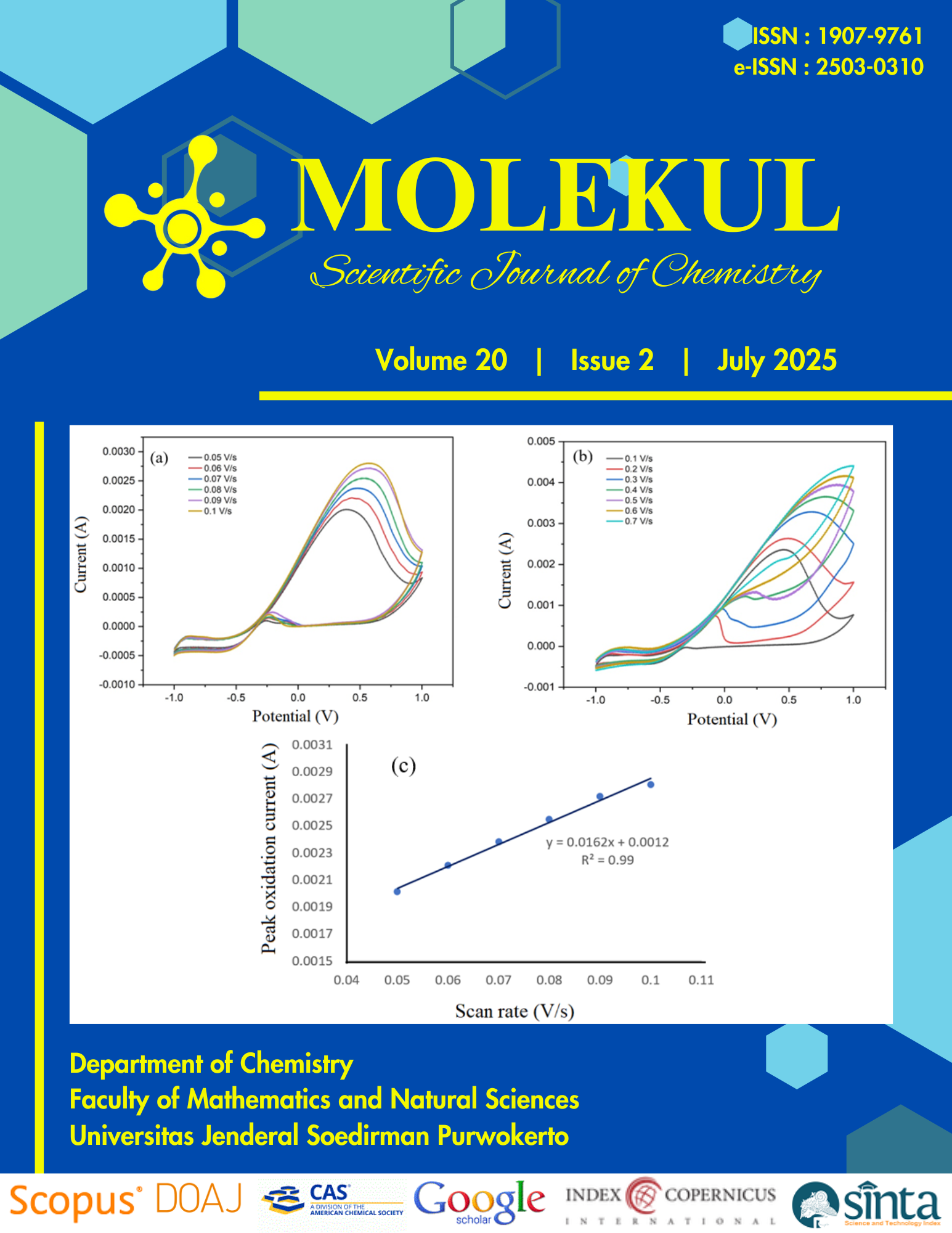Harnessing Nature's Colors: Combining Plant Pigments and Metal Coatings for Dye-Sensitized Solar Cell
Abstract
ABSTRACT. This study aims to improve the efficiency of dye-sensitized solar cells (DSSCs). To overcome the recombination problem in the commonly used TiO2 semiconductor, we performed electrodeposition of ferrous metal (Fe) on TiO2. XRD characterization showed that after Fe electrodeposition, the crystal structure of TiO₂ remained in the anatase phase without significant changes compared to before deposition while based on SEM-EDS results, Fe was dispersed to form small agglomerates that functioned as metal contacts to reduce electron recombination. We also investigated the use of anthocyanins from various natural sources, including jengkol skin, senduduk fruit, mangosteen skin, and red grape skin. These anthocyanins were copigmented with salicylic acid. UV-Vis spectroscopy revealed that copigmentation caused a bathochromic shift and FTIR spectrum confirmed strong interaction between anthocyanins and salicylic acid through hydrogen bond formation. The combination of TiO2-Fe layers with pigmented dyes resulted in diverse DSSC efficiencies, with mangosteen peel showing the best performance (4.123%), followed by senduduk fruit (3.495%), grape peel (2.569%), and jengkol peel (1.925%). The increase in efficiency from 1.189% (without Fe coating) to 1.700% (with Fe coating) demonstrates the potential of this technique. The small TiO2 crystal size (about 61.8 nm) also contributes to the increased surface area, enhancing dye absorption and solar cell performance. The electrical efficiency showed that the combination of TiO2-Fe with copigmented anthocyanins from mangosteen skin produced DSSCs with the highest efficiency, demonstrating the potential of this approach to improve the performance of natural dye-based solar cells.
Keywords: Co-pigmentation, dye-sensitized solar cell, Fe electroplating, natural dye.
Authors agree with the statements below:
- Authors automatically transfer the copyright to the MOLEKUL journal and grant the journal right of first publication with the work simultaneously licensed under a Creative Commons Attribution 4.0 International License (CC BY 4.0).
- Authors are able to enter into separate permission for the non-exclusive distribution of the journal's published version of the work (e.g., post it to an institutional repository or publish it in a book), with an acknowledgment of its initial publication in this journal.













